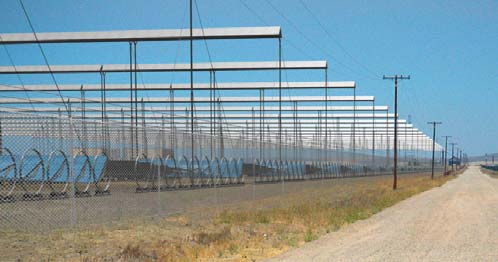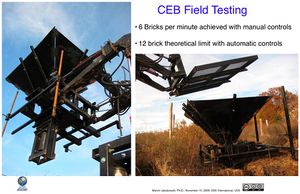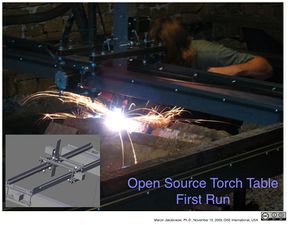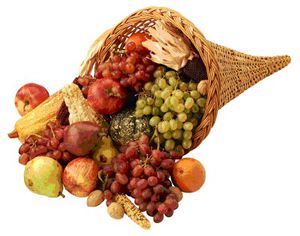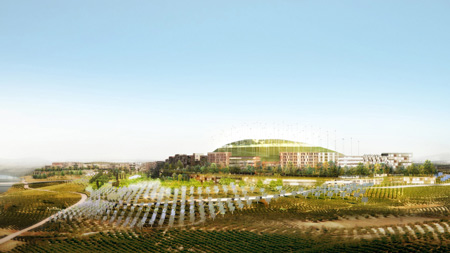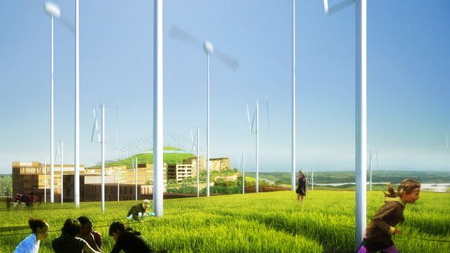H Plus Summit Slides
How to build post scarcity, resilient communities
What's Novel? Today, it's possible to create advanced civilization from dirt and sticks, anywhere. This has been proven historically - except on a the global scale. People continue to plunder and kill each other to get their piece across the globe. Let's cut that out, and get it from any piece of land.
Now, it's feasible on the scale of a land parcel - if it contains earth, water, and sunlight. (dirt and twigs)
That's what we're doing. In particular, we claim that with these 40 technologies and external metal supply, we can create civilization from scratch. (40 pieces)
We've built some things in this set. OS tractor, torch table prototype, and CEB press. Open source, crowd supported, post-scarcity aimed.
Ridiculous low cost - costs $2500 in materials, we can sell for $5k. 10-20 times less cash cost if I were to get one somewhere else. No, I'm not kidding.
So maybe this is a great example of post-scarcity economics for real needs? How about CEB housing: nice pix
But we're after resilient communities. Nice pix.
Our main competitor is Patri from Seasteading. He claims awesome experimentation in novel social and political forms. We think it's much easier on land, if you have a resource based economy.
An RBE means that you are processing natural resources using advanced, open source technology. You create an economy of products, not federal reserve notes that are backed by some form of human belief, because that belief can vaporize at any time. Bad design.
Lifestyle? The critical gap of post-carbon, doomsday, and other fatalists are that we need to restrict ourselves in our prosperity. I don't think so. We propose neosubsistence - high-tech, automated survival where you don't need to work much, so you start to pursue your dreams more. Materials are not an issue.
Is energy an issue? Nope. Solar concentrator power for every home, at about 100 times less cost than PV panels. 50x50 mile area does it for all of USA, 3% of it's land.
So we can prosper. The only thing we need to watch out is The Singularity. Human wisdom needs to increase. I don't recommend that we remove ourselves as far as possible from natural life support systems, or go to space.
For example: permaculture could provide now. Add remote control tractors, and your food is obtained at 6 hours per person per year, unless you insist on growing everything in test tubes. Natural products work, and they are the easiest to provide if you do the ergonomic analysis. It's our choice: 1 trillion people on earth, or hold it to similar levels as today? I propose we just stick to an easy way.
Automation in fabrication. Now we can talk reasonably of robotic arms for every home, automated control tractors, 3D printers, everything.
The last frontier in decentralization is materials. Take Open Source Fab Lab, and reproduce technological process down to all industry, and smelt aluminum from clay and silicon from sand. Locally, so you don't have to go to war to get the same, especially if solar energy is available.
Back to our experiment. What's unique? The first, replicable, open source, post-scarcity, resilient community in the making. Who's there? Nobody but me, it's winter. We're building next year. Any pioneers willing to invest to develop this are welcome, talk to me. We are looking for lifetime investors, 1/2 acre for a lifetime lease at $10k. But you'd have to work to make the post-scarcity lifestyle happen - it's not for the fainthearted.
In conclusion - we're showing certain unique concepts being implemented: 1. The infrastructure for a real, post scarcity community with complete economy, off grid, high-tech neosubsistence. 2. Open source production and free biz models for post-scarcity creation 3. New social organization - autonomy on land if this is adopted. Subscribe to be a True Fan - $10/month.
The real deal: autonomy, no sacrifice in comfort, full freedom to pursue what you need. This is unbelievable for most, but real if you choose it - as you can't depend on the next guy to do this. Start a new system, this one is broken.
Marcin will be presenting this 5 minute presentation at the Humanity Plus Summit.
The flavor is high-tech neosubsistence.
Slide 1- Cover
How to Build the World's First, Replicable, Post-Scarcity Resilient Community By Marcin Jakubowski, Ph.D. Presented at the H+ Summit, Irvine, Californa December 5-6
Slide 2
Many are proposing post scarcity as the way to go. Here is an experiment in practice. High tech neosubsistence - reinvent the wheel by opensourcing the wheel - add modern touch to old stuff.
Imagine if you took all that society has learned to date, and apply it?
Slide 3 - 6 - survival: energy, materials, housing, food, technology
Let's start with land. You might want some clean energy - say from the sun.
It boils down to energy - do we have it? Yes, the sun is the source of all power. The USA use approaches 1000 GW (3kW per person) these days. NASA scientists can tell us that this power can be generated from a square area of 100 miles on the side. This is about .3% of the area of the USA. Next.
Slide 4
If we have energy, then we can have materials. Let's turn dirt into advanced civilization.
1. Take clay, and you can smelt aluminum. This is aka advanced civilization.
2. Take sand and you have silicon. This is aka digital age.
It's happening fast.
Slide 5
For technology - here's my favorite example. You can build RepRap - the OS 3d printer - for 300 in parts. It would cost you $10k for a commercial version.
Slide 6
You have seen notions of cost reduction. Yes. Factor of 30 for RepRap. We have shown similar for CEB press- $2500 in materials. The next competitor is $45000 for a 10 bpm machine, we think we can do 12, and initial tests showed 9.
Well, we do have 6 million people born per month, so we're 'thriving' like field mice in a population explosion.
Slide 7
Next, move to RepLab - the open source fab lab. You may have heard of the fab lab - the lab scale microfactory where they claim you can make just about anything.
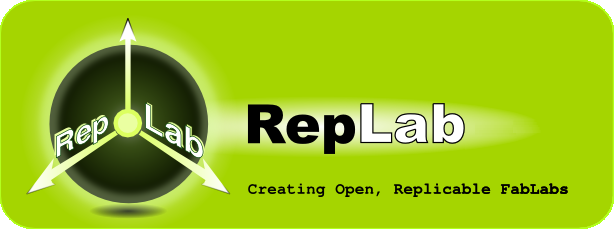
Slide 8
As technology drops in size, and information flows increase - the inevitable is technological recursion where anyone can make anything anywhere. You can create a locus of advanced civilization - on a 30 acre farm. That's our experiment.
Slide 9: Economy
What's the economy? Digital fabrication, neosubsistence. Produce if you like. Let an automated tractor do your agriculture, or a robot milk your goats. Time requirement - we're doing an experiment that shows 12 hours of time per person per year for 12 people. This collects and grows your energy and fuels. You live a quality of life where you decide what to do with your time. The rest is harvest and enjoying local food. You can go to the restaurant, too. We do trade, but we also know how to produce everything.
Slide 10: Who are the competitors?
Our competition is the mainstream economy. Most people favor their 9 to 5s. another competitor is Seasteading. However, we like to do it on land - as autonomous production means autonomous community - and it's cheaper than at sea. We gather a few friends, live happily ever after.
We prefer this:
and this:
Slide 11
This is not easy. Most people don't believe this is possible. MOst don't believe they could be makers. Most don't understand that all wealth comes from the ground. Most people don't understand that technology exists to turn dirt and twigs into anything. And in particular, they don't understand that just about all of this can be done in their backyard.
